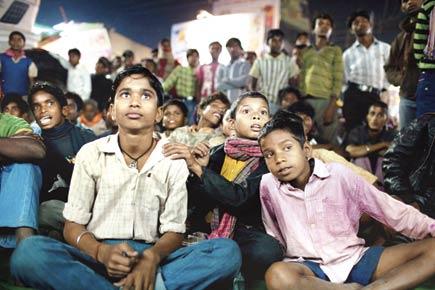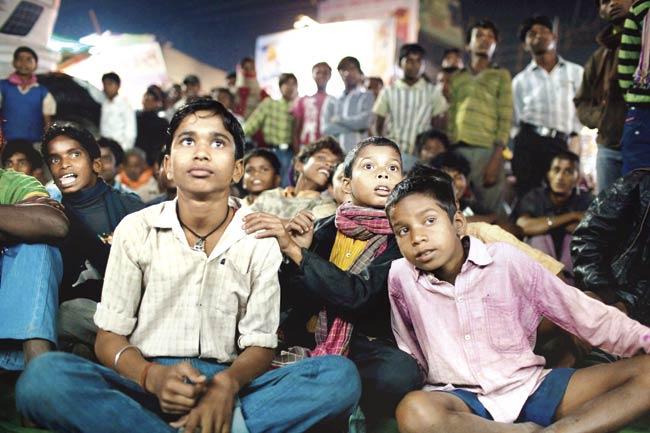Sevanti Ninan researches and writes on media from a developmental perspective. Some of her books, on satellite television and Hindi newspapers in particular, are path breaking

 Sevanti Ninan researches and writes on media from a developmental perspective. Some of her books, on satellite television and Hindi newspapers in particular, are path breaking. She is also the founder editor of thehoot.org. The website was set up in 2001 under the Media Foundation. It carries research and stories that mainstream media cannot or will not do - on the paid news scandal or how caste operates in India’s newsrooms or the reality of sting operations.
Sevanti Ninan researches and writes on media from a developmental perspective. Some of her books, on satellite television and Hindi newspapers in particular, are path breaking. She is also the founder editor of thehoot.org. The website was set up in 2001 under the Media Foundation. It carries research and stories that mainstream media cannot or will not do - on the paid news scandal or how caste operates in India’s newsrooms or the reality of sting operations.
 The poor love digital TV because it has improved choice and quality. The most popular channels in rural India are Discovery and National Geographic. These two channels, in their regional avatars, are becoming a substitute for education. Representation Pic/ Getty Images
The poor love digital TV because it has improved choice and quality. The most popular channels in rural India are Discovery and National Geographic. These two channels, in their regional avatars, are becoming a substitute for education. Representation Pic/ Getty Images
ADVERTISEMENT
Ninan recently conducted an intensive five-state study across Andhra Pradesh, Odisha, Delhi, Gujarat and Chhattisgarh with some additional interviews in Uttar Pradesh and Bihar. The study was done under the Media Foundation and funded by the Ford Foundation. The research team travelled to 15 villages, 2 semi-urban areas and 6 urban slums to look at how digitisation of television, mandated in 2011, is affecting poor people. You could download the study from the research section on The Hoot.
Its ‘indicative findings’ are startling to say the least. Here are three key ones.
One, the poor love digital TV because it has improved choice and quality but it has also increased the amount they spend on television. So they scrimp on food or save less but do not like to give up their
television.
Two, their content needs are not always about entertainment. The most popular channels in rural India are Discovery and National Geographic. These two channels in their regional avatars are becoming a substitute for education. The other popular shows are ones on agriculture, vocational training and job opportunities. But there aren’t enough of those.
Three, many of the poorer homes are switching to Freedish, Doordarshan’s free DTH service. But they are not happy with the choices it offers - lots of free private channels such as Star Utsav or Zee Anmol and all the DD channels. They want more education and vocational shows as mentioned in point two.
To my mind, these are insights that private broadcasters and even Prasar Bharati Corporation would give a lot to know. So we invited Ninan to present it at afaqs! TV.NXT 2014, a TV event that I curated, in Mumbai earlier this month. Ninan was hesitant as first. She reckoned that her world of developmental media was from another planet and the world of commercial television that Mumbai represented would never get where she was coming from.
TV.NXT, an event I have now curated for four years, tries to get everyone who is part of the ecosystem of the Indian television industry, in one place - broadcasters, researchers, distributors, investors, programmers and so on. And to my mind this research was as much a part of the ecosystem. Funnily enough the industry thought so too. Ninan’s presentation was a huge success. There were questions and requests for a copy of it and so on. We are still answering some of those requests. One of the speakers from EY said he was so happy to see the research that he wanted to hug Ninan - his firm had done a dipstick study in Mumbai’s slums and discovered more or less the same things. Her research was proving something they had discovered but did not have enough evidence on. For those who don't know, EY advises some of the biggest media and entertainment firms in the country.
The point however is not the research but the need for these two worlds - the one that worries about media and its public service obligations and the one that makes its money from fulfilling India’s entertainment and information needs - to meet. These inter-galactic meets create all sorts of ideas and connections.
There were ideas in Ninan’s presentation which, if executed well, can make money and help development - like the one on agricultural and vocational content needs. Being alert to these needs is what good business is all about. Digitisation is changing the shape and structure of the Indian TV market and broadcasters are looking to serve this fragmenting market better. For example, one big outcome of digitisation has been the boom in free-to-air channels that mentioned in this column.
Good independent private media has done a world of good in India - by bringing more choice and variety to middle-class Indians. By connecting more often, both these sides - the non-commercial one and the commercial one - could do much more.
Disclosure - afaqs! TV.NXT is part of Banyan Netfaqs, a company in which my husband Sreekant Khandekar is a director.
The writer is a media specialist and author. Follow her on twitter at https://twitter.com/vanitakohlik
 Subscribe today by clicking the link and stay updated with the latest news!" Click here!
Subscribe today by clicking the link and stay updated with the latest news!" Click here!







